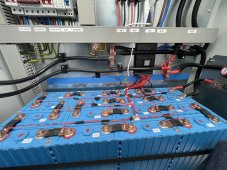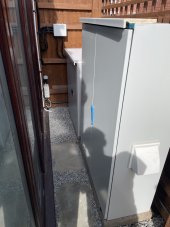Hello everyone,
I have a question regarding my current battery setup:
16x LifePo4 140A
16x LifePo4 302A
First battery bank is in the same enclosure as the inverter with quite short runs to bus bars (home made copper)
Second battery bank is in another enclosure next to the first one but with longer cable runs.
The first battery bank uses 50sqm welding cables, on the second i have used 75sqm (to compensate for the distance (aprox 1.5m on both positive and negative).
Ive attached some pictures with my current setup and want to ask some opinions if this would affect in any way the performance or current sharing between both battery banks. (Hopefully it’s clear from the pictures)
Thanks
I have a question regarding my current battery setup:
16x LifePo4 140A
16x LifePo4 302A
First battery bank is in the same enclosure as the inverter with quite short runs to bus bars (home made copper)
Second battery bank is in another enclosure next to the first one but with longer cable runs.
The first battery bank uses 50sqm welding cables, on the second i have used 75sqm (to compensate for the distance (aprox 1.5m on both positive and negative).
Ive attached some pictures with my current setup and want to ask some opinions if this would affect in any way the performance or current sharing between both battery banks. (Hopefully it’s clear from the pictures)
Thanks





